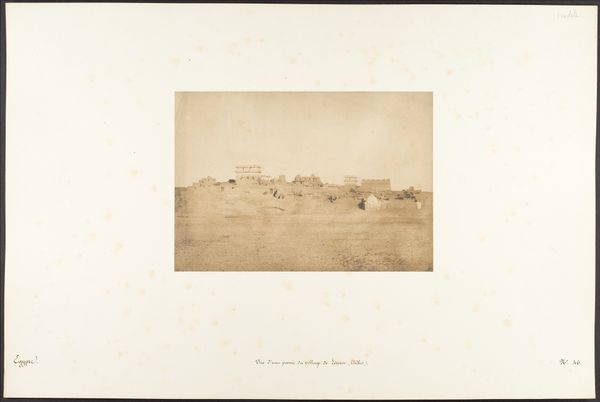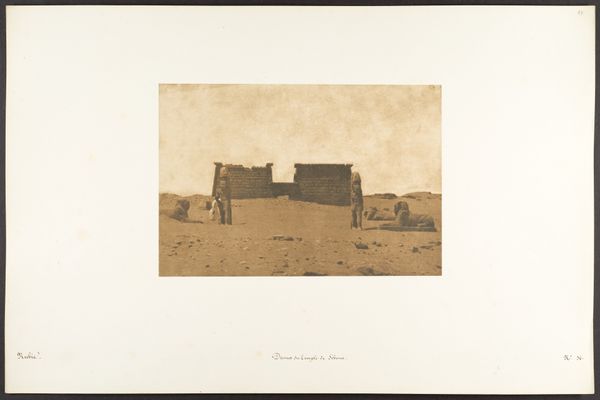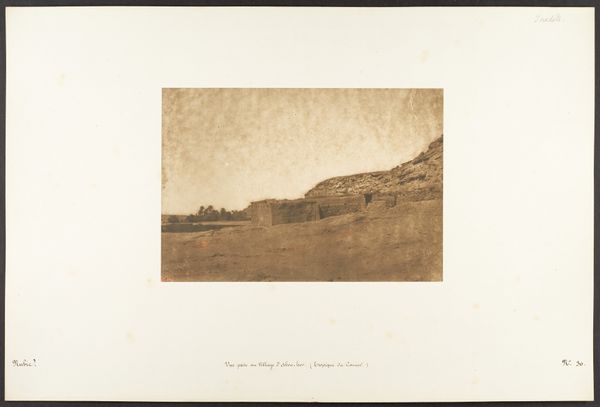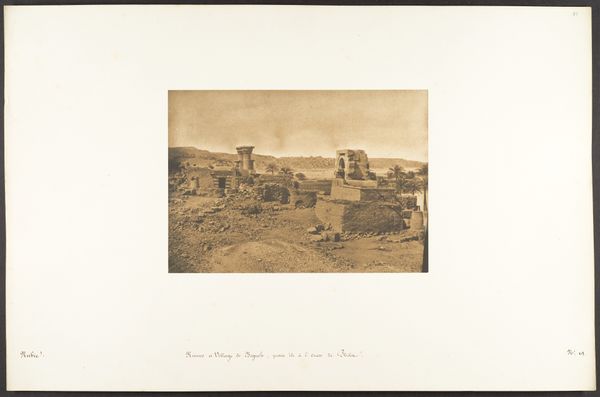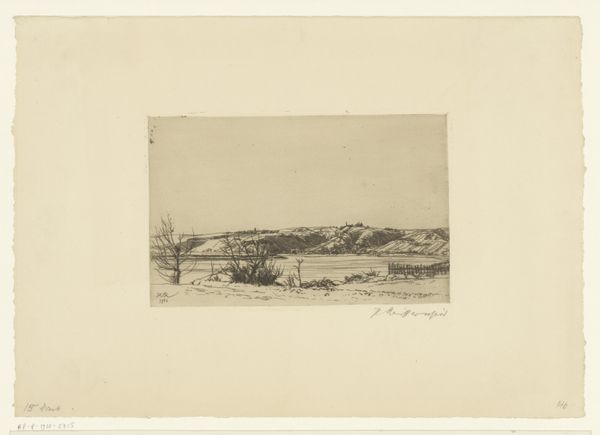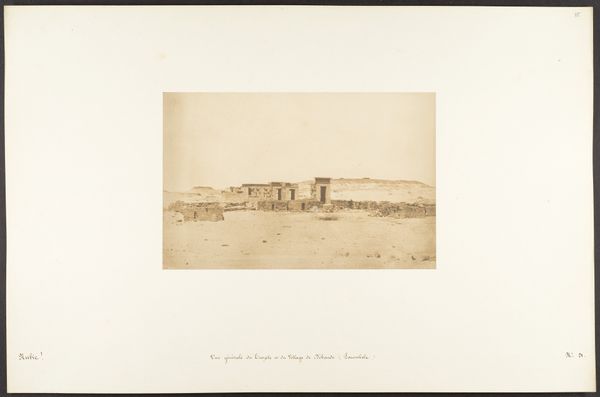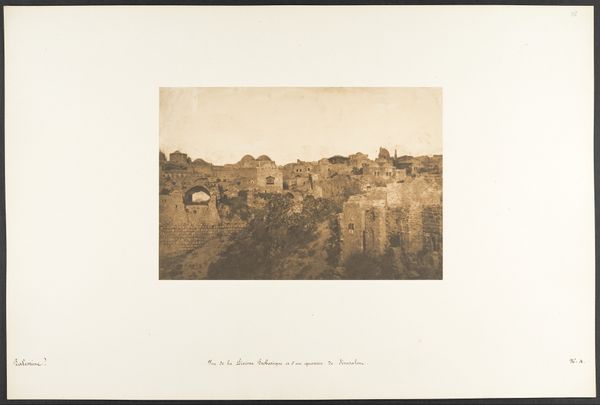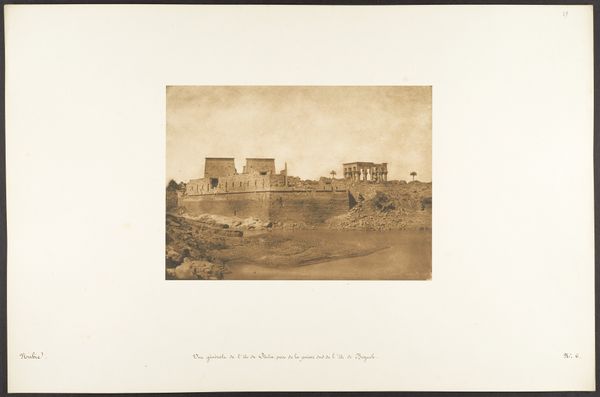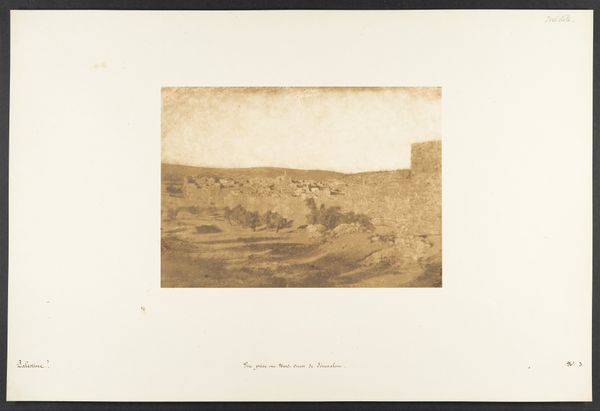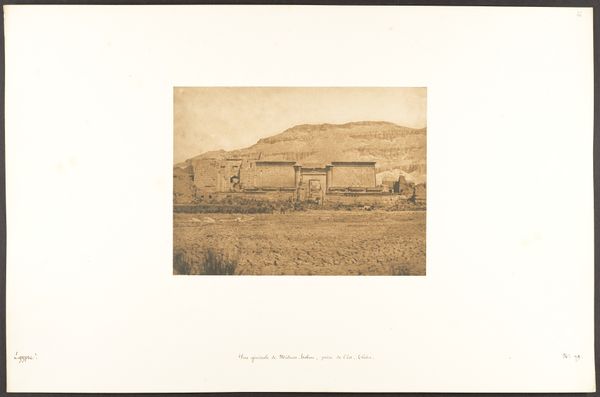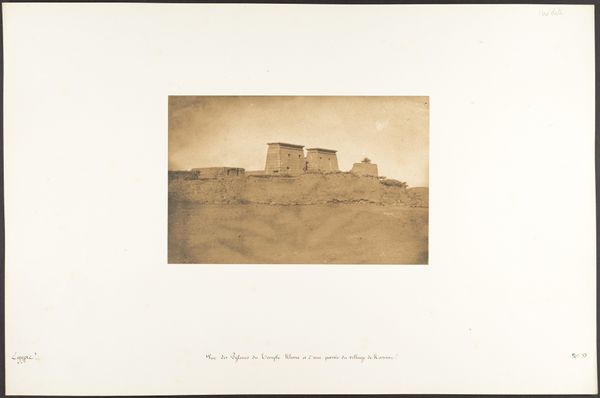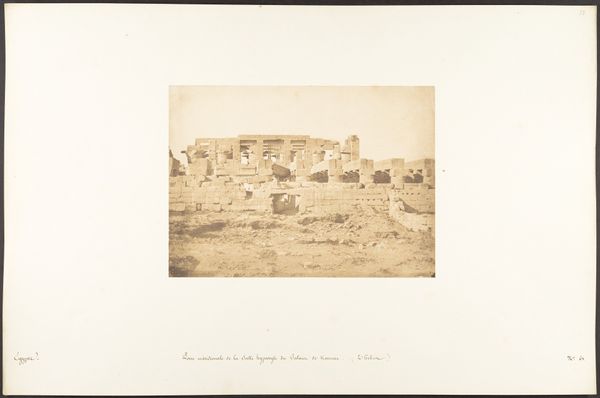
daguerreotype, photography, architecture
#
landscape
#
daguerreotype
#
photography
#
cityscape
#
architecture
Dimensions: Image: 5 3/4 × 8 9/16 in. (14.6 × 21.8 cm) Image: 8 7/8 × 6 9/16 in. (22.5 × 16.7 cm) Mount: 18 11/16 × 12 5/16 in. (47.5 × 31.2 cm)
Copyright: Public Domain
Editor: Here we have Maxime Du Camp's "Vue du Village d'Abou-hor (Tropique du Cancer)," a daguerreotype from 1850. The sepia tones give it such an ancient, desolate feel. I’m really struck by how the light emphasizes the texture of the architecture. What stands out to you when you look at this piece? Curator: I notice immediately the careful composition. The photographer divides the image into distinct planes – foreground, middle ground, and sky, albeit a very subdued sky. Note the textural differentiation. The lower register provides the granular base, and is offset by the rough, geometric masses comprising the built structures. This juxtaposition gives the photograph a rigorous structural integrity. Editor: The almost monochromatic palette is interesting, too. Does that serve a particular purpose? Curator: Indeed. The tonal uniformity guides the viewer's eye, compelling us to consider not the vibrancy of color but the interplay of light and shadow and the subtleties of texture. It highlights form above all else, emphasizing the materiality of the structures. How do the angles impact the way you read the composition? Editor: They almost look like ruins, the geometry softened with the passage of time and erosion. Curator: Precisely! The subdued palette, coupled with the suggestion of decay, prompts us to contemplate the enduring nature of form versus the ephemeral quality of the scene. It’s the study of architectural form reduced to its most fundamental. A perfect visual language of shape and form! Editor: I see what you mean. The emphasis on structure and form lets you look beyond the subject matter itself. Curator: It underscores that art is often less about what is depicted and more about how it is depicted, and what structural and textural meaning is conveyed! Thanks to Maxime Du Camp for this fine lesson.
Comments
No comments
Be the first to comment and join the conversation on the ultimate creative platform.
